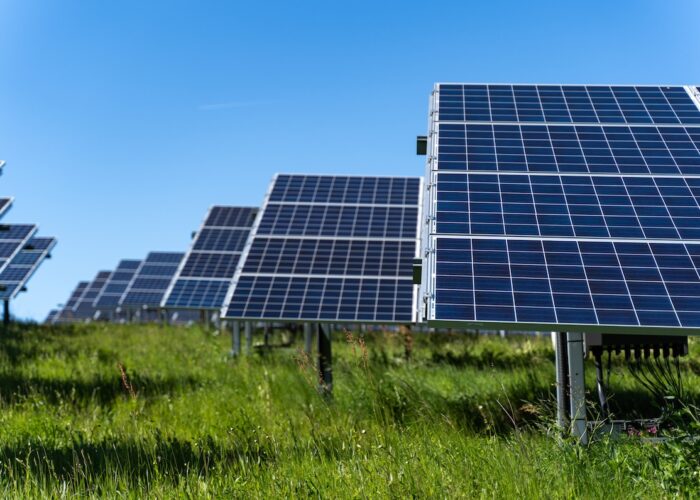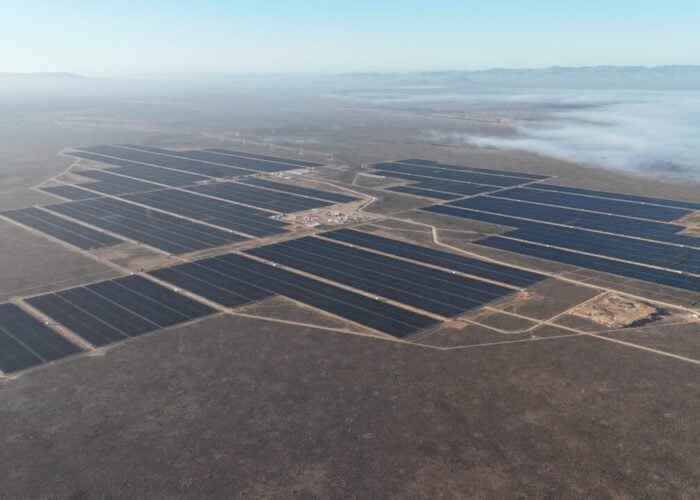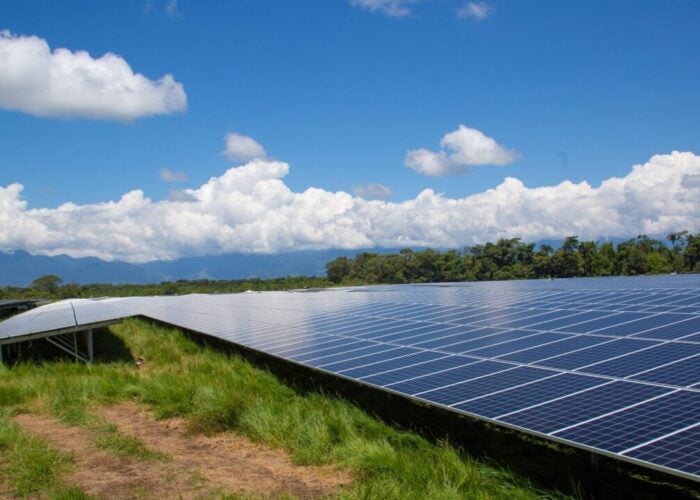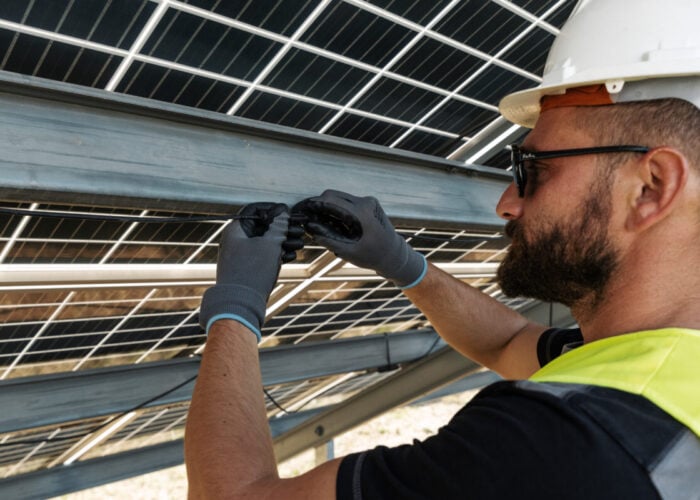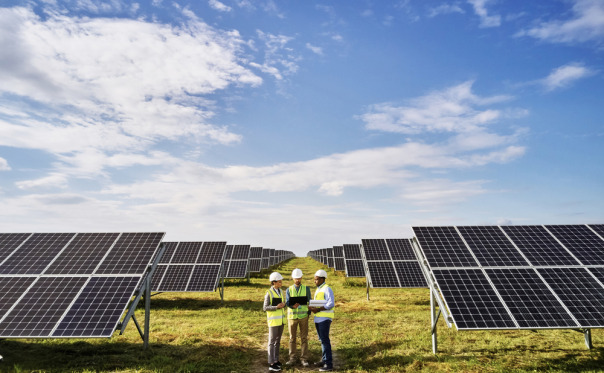
Australia’s Victoria government has proposed seven renewable energy zones (REZ) for the state, emphasising these will help achieve its target of 2.7GW of utility-scale solar PV generation by 2040.
Seven Renewable Energy Zones (REZs) are being proposed for Victoria in the newly released Victorian Transmission Plan. This draft outlines the state’s transition away from coal-fired power towards variable renewable energy generation and energy storage over the next 15 years. The plan has been released by the state-owned company VicGrid.
Try Premium for just $1
- Full premium access for the first month at only $1
- Converts to an annual rate after 30 days unless cancelled
- Cancel anytime during the trial period
Premium Benefits
- Expert industry analysis and interviews
- Digital access to PV Tech Power journal
- Exclusive event discounts
Or get the full Premium subscription right away
Or continue reading this article for free
Indeed, the seven draft proposed REZs include the Central Highlands, the Central North, Gippsland, the North West, the South West, Grampians Wimmera, and Wimmera Southern Mallee.
Each REZ zone will feature wind generation; however, only two include plans for utility-scale solar PV generation. These are the Central Highlands and North West REZs, which target 125MW and between 930MW and 1,390MW, respectively.
According to the draft plan, these REZs will cumulatively cover around 7% of Victoria’s land area. The government estimates that around 11% of these REZs will be required to host solar PV and wind facilities to help achieve its 2040 targets.
Although it may seem like large parcels of land will be used specifically for renewable energy generation, the infrastructure requires minimal land use. Around 0.06% of Victoria’s total land area is required for the physical infrastructure, such as wind turbines, solar PV modules, access roads, and other aspects of power plants. A visualisation of the land use needed can be seen below.
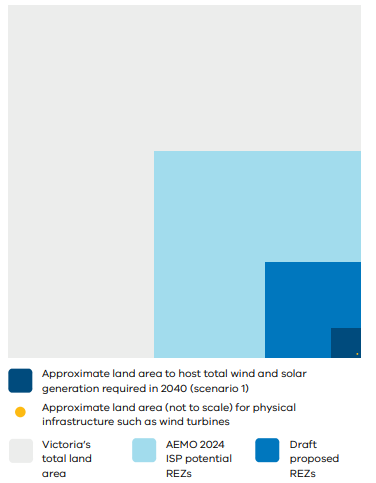
The estimated area of the land parcels in which onshore renewables will be hosted by 2040 (both inside and outside a REZ) is approximately 230,000 hectares, or about 1% of Victoria’s total land area.
The transmission plan is based on the state’s 2040 targets. These include targets for 5.8GW of new onshore wind generation capacity, 9GW of new offshore wind, and 2.7GW of utility-scale solar PV generation, all of which will be firmed by 3.4GW of short-and long-duration energy storage capacity.
These targets have been outlined as part of Scenario One, which considers a future in which Victoria’s energy sector evolves in line with the Australian Energy Market Authority’s (AEMO) integrated system plan (ISP).
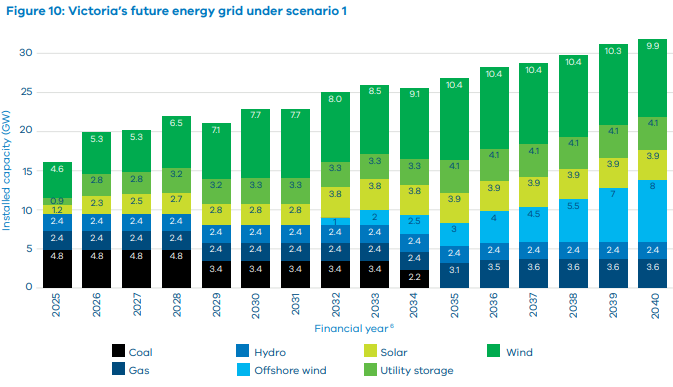
The draft proposal expects onshore wind and solar generation to have a key role in Victoria’s overall generation mix over the next 15 years, delivering 13.6 GW or 48% of total grid-supplied generation.
Transmission upgrades are required to support renewables
Alongside the development of renewables, the proposed transmission plan also details various upgrades and projects that will be needed to help facilitate the growing number of renewables in the Victoria grid.
Specifically, two have been noted to support connecting new wind generation and utility-scale solar PV generation capacity. This includes the Western Victoria reinforcement programme and the Latrobe Valley strengthening programme.
The Western Victoria reinforcement programme aims to support the connection of new utility-scale solar PV and wind generation by providing upgrades and augmentations to existing network infrastructure. This will primarily support the proposed Wimmera Southern Mallee, Grampians Wimmera, Central Highlands and South West REZs.
It is anticipated that this network upgrade will be needed by 2028.
Meanwhile, the Latrobe Valley strengthening programme will provide new power flow controllers and dynamic load rating devices in the Latrobe Valley, a region of Victoria that has seen several large-scale renewable energy developments proposed, such as the 450MW Hazelwood Solar Farm. This site also includes plans for a 450MW/1,800MWh battery energy storage system (BESS).
VicGrid is seeking feedback on the draft 2025 Victorian Transmission Plan from communities, landholders, industry, First Peoples, and Traditional Owners. The feedback will help shape decisions about the final plan, including the boundaries and sizes of proposed renewable energy zones.
The organisation also said it will inform its approach to future engagement and transmission project planning, development of renewable energy zones and future Victorian Transmission Plan updates.
The final plan is expected to be released later this year and will be updated in 2027 and every four years following this, or more often if required, VicGrid noted.
The deadline to provide feedback is 23:59 AEST on 24 June 2025. You can find out more about submitting feedback on VicGrid’s website.
Australia’s renewable energy zones
Readers of PV Tech will be aware that the REZs are not specific to Victoria, but are being pursued across several of Australia’s states.
Indeed, the New South Wales government is developing at least five separate multi-gigawatt REZ facilities connected to the grid and partially using long-duration energy storage (LDES) to replace traditional centralised power plants.
The five REZs include the Hunter-Central Coast, the South-West, New England, Central-West Orana, and Illawarra. Meanwhile, Queensland published a roadmap last year detailing how it would develop its 12 REZs.
Construction on Australia’s first REZ, the Central-West Orana, is set to begin at the halfway point of 2025. ACEREZ, a consortium of ACCIONA, COBRA and Endeavour Energy, were selected by EnergyCo in April 2025 to deliver the significant project.
Earlier this month, EnergyCo announced that it had granted access rights for 7.15GW of renewables and energy storage to connect to the Central-West Orana REZ.



